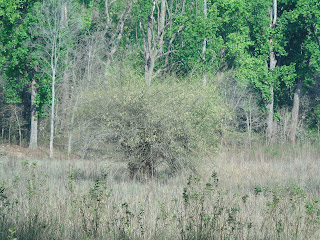As environmentalists warn us the 6th Mass Extinction is on the way. This is a certainty until unless we do something to stem the rot and put brakes on demise of many species.
How?
There could be a vast cornucopia of solutions but let us pay greater attention to what we have in hand...and that is the remaining ecosystems. The critical tiger habitats are limited in area but they are surrounded by badly fragmented and overused lands surviving under constant threat from human encroachment and biotic pressures. Subject to overgrazing by the livestock, they offer stiff competition to the wilderness that prevails. The periphery of tiger reserves, they are called the buffer because this land is crucial for the survival of the tiger in India. As a matter of practice or conservation technique we have to tackle each and every factor/element imperative or influential in the survival of the big cats in India.
These core verdant lands are complete ecosystems albeit drastically reduced due to human activities. In India, most of these areas come under the aegis of Project Tiger and are notified as tiger reserves. Also called protected areas they are a blessing for all life forms with beleaguered existence. The vital inviolate core offers a place for the successful breeding of neglected life forms and protects them from ever-expanding agriculture and marauding humans' ways.
Buffer zone management become crucial in the current circumstances of dire need. The viable lands where all life forms can live and flourish had been badly reduced due to urbanization, encroachment, agriculture, and in some places commercial activities and manufacturing. The regulated ecotourism efforts in the buffer have proved to be beneficial and fetch revenue and keep the areas under the scanner besides development initiatives for the upkeep of the ecosystem. It provides employment to local laborers, guides, and drivers.
In most of the buffer zones especially those surrounding the major tiger reserves protection is accorded. Patrolling is a means of according physical protection to these lands but the biotic pressure, culling of trees, and encroachment by agricultural practices to some extent continues illegally.
In the buffer limiting human population and limiting land occupancy (strictly) to the original inhabitants is imperative and so is the need to discourage commercial activities therein. This sounds discriminatory but then we have to understand the right land use patterns taking these steps would mean large areas secured for the forests, grasslands, and rivers the natural earthly phenomenons. We cannot put these lands to use for greed as well as for our economic survival because we have enough that is beyond repair - taken over by agriculture, settlements, and manufacturing not forgetting the usurpation of forests due to reckless mining.
The time has come for extensive in-situ conservation, especially to rewild the areas with the potential for regeneration like the buffer zones with extensive plantation drives using indigenous species. In order to ameliorate the damage done we have to take some steps that could redefine land use patterns in India. Limiting human populations and livestock - most livestock is unproductive anyway - is a priority...if not the complete trans location of people. This approach may be seen as regressive or discriminatory but in a later period, this will help check climate change...turn it favorably for the existence and continuation of life on Earth...and yes the ecosystem repair efforts will provide employment to the indigenous communities the right way.
It would be unfair to say that protection offered and plantation drives are not being done by the present dispensation but this has to be done on a larger scale. The departments can rarely influence the scale of activities required due to political and administrative constraints hence public pressure is required in circumstances like these.
We have to learn to speak or express what we deem to be right in the management of our wilderness and the Nation as a whole. Sitting mutely will unfold the disaster in making with a ferocity that will eventually destroy life on Earth. The time has come to tackle climate change seriously with full-scale efforts.
Plant a few indigenous plants in your home that is the right way to begin.
=======================
Uday blogs on conservation and the environment. He is a freelance naturalist in India.
Contact: pateluday90@hotmail.com
9755089323
=======================
Uday blogs on conservation and the environment. He is a freelance naturalist in India.
Contact: pateluday90@hotmail.com
9755089323










